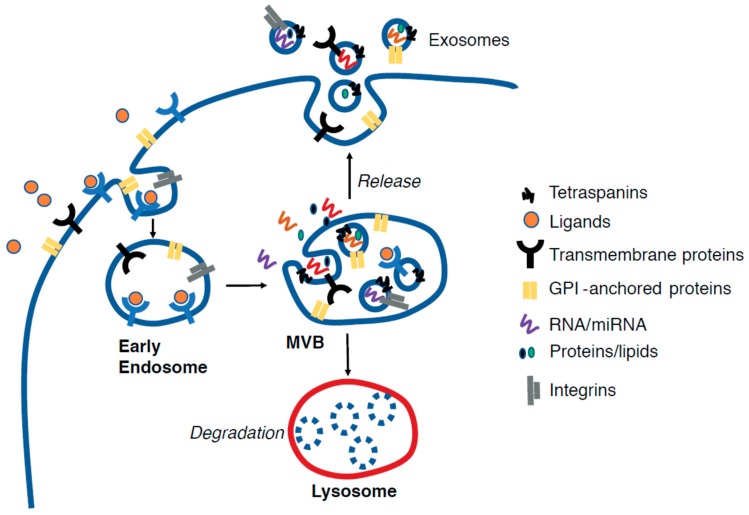Figure 2.
Schematic representation of exosomes biogenesis. The in-budding of endosomes originates the multivesicular bodies (MVBs) which can follow different fates: (i) fusion with the lysosome, which leads to degradation of MVB content; (ii) fusion with the cell membrane and release of intraluminal vesicles to the extracellular space, thus generating exosomes. The exosomes are enriched with several proteins located on the membrane including, but not limited to, transmembrane proteins/receptors, integrins, glycophosphatidylinositol (GPI)-anchored proteins, and tetraspanins, which are specific markers of exosomes. Intra-exosomal proteins, nucleic acids (coding and non-coding RNA), lipids, and other metabolites, do also exist, and are loaded during the invagination of MVB membranes. Such molecules can be transferred to host cells once exosomes are released by donor cells and activate signaling pathways.

